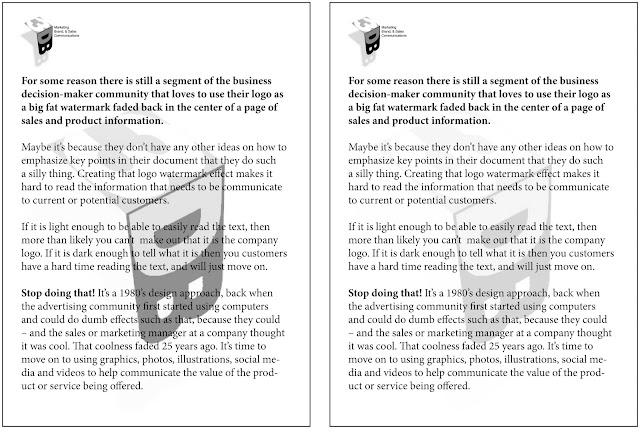Over and over on talk radio, blogs and Tweets, the fans and the media go back and forth either complaining about the attendance at the Tampa Bay Rays game, and why they don't attend. Looking at it from a product-value perspective here are a few ideas how to increase attendance:
First, the reasons for attending a game. Going to a Rays baseball game provides the opportunity to engage with others of similar passion and feed off the combined energy of others at the ball park! How many of you high five at home, or jump to your feet and cheer? That experience provides an intense adrenalin rush you just don't get at home watching the game on your TV. Plus, talking with others around you about the game and having that shared human interaction experience also provides for a more memorable evening.
So why then are people choosing to stay home?
Here's just four ideas on how to improve the game-day-experience by bringing some of the features and positive experiences from the TV, to the ballpark:
1. Add more instant replays to the giant screen at the stadium. I'm spoiled. I'm use to seeing exciting and close plays over and over again from different angles, and/or in slow motion – and because of that, my mind and interest in the game is increased in between pitches and plays. At the Rays' games it is rare to see any kind replay, and never when an umpire is involved in a play.
2. I like seeing the occasional FoxTrack strike zone box that locates the pitches – it gives a computer perspective on the balls and strikes as well as seeing how the strategy of the pitches to the batter is evolving. Ya, ya, that is like hitting a hornets nest with a sharp broken bat. Ok, so not every pitch -- and as a compromise FoxTrack only shows when it agrees with what the umpire called on that recent pitch to keep the players, managers and fans calmer, but at least the fan would get to see the pitch history and how the strategy of pitches are building on each batter. That is called engaging your customers in your product.
3. At the ballpark an emotional or close up connection is missing with the players.
How so? On TV I see a close up of the pitcher taking a deep breath, wiping his brow, making eye contact with his catcher – and I'm able to read his facial expressions, which adds to the drama of the moment. Same with the batters, where are they looking, do they look cool or worried, frustrated or confident? A close up of the players on the big screen could add a more personal touch to attending the live game, like it does on TV. Sure, the other team would be watching the facial expressions and trying to read something into it -- but wouldn't that just add to the tension and intensity of the game, for players and the fans?!
4. Payer and fan interaction. When the players get done patting each other on the back after a win, wouldn't it be cool if the players divided up and jogged to the foul poles and then high-fived people down the foul lines at the end of the game before they hunkered down in their clubhouse to party? That would bring something to the fans in attendance that the TV fans can't experience – personal interaction. Have the players act like they really care the fans are there in attendance, not just appear like they are entitled to have fans in the stands because they are major league ball players.
Now for the big how-to Summary!!! In order for people to attend the game, it has to be an experience that is better than watching it on TV. There are features and advantages to both the TV and at the park, but at the moment, apparently there are more advantages to watching it on TV. Come on Rays and major league baseball, add in some of the best features from the TV to the ballpark, and the experience of the live game becomes a better experience than watching it at home. The value of attending the game involves weighing the cost and time involved -- and comparing the features and advantages between the TV and the ballpark. So if the Rays were to add the advantages of the TV -- to the live game experience, the fan's perception of value will increase, and so will attendance.





















